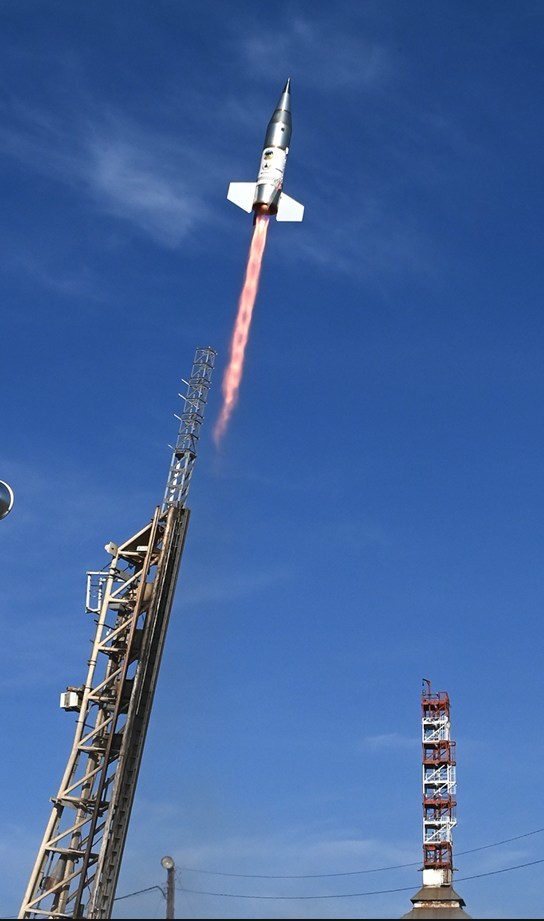Just four months after coming out of stealth mode, space technology company X-Bow Launch Systems successfully launched its first rocket in a test carried out in partnership with the Department of Energy‘s Los Alamos National Laboratory (LANL). On July 23, X-Bow’s first modular boost rocket, dubbed Bolt, blasted off from the U.S. Army-operated White Sands Missile Range in New Mexico to complete a test designated as Responsive Development Experiment (ReDX), part of the XL-2 mission.
An aerospace industry disruptor, X-Bow focuses on designing and developing 3D printed solid rocket motors that are more efficient and considerably more cost-effective than traditional counterparts. Since its founding in 2016, the company has created a new class of highly flexible, reliable, and ultra-responsive solid rocket motors. Moreover, with the launch of Bolt, it has managed to introduce a new product into a market that has not seen significant technological change for decades.
With a mission to modernize solid motor production through additive manufacturing, X-Bow is introducing a line of space-bound products that include propellants, motors, and turnkey launch services that are available to both government and commercial space customers, which, aside from LANL, already include U.S. Air Force (USAF) research labs as well as the Defense Advanced Research Projects Agency (DARPA).
Commenting on the company’s first rocket in orbit, X-Bow’s XL-2 mission manager and director of programs Samuel McCraw said, “the launch caps off an impressive and successful three-month effort at X-Bow.”
“Over this short period, our talented team designed and built a new test site, completed our first large motor static fire, and pulled off an 11-day launch campaign leading to a successful first flight,” explained McCraw, who, prior to joining X-Bow, was Vice Commander of the USAF’s Space Development and Test Wing, and senior systems engineer at defense and space manufacturer Integrity Applications Incorporated.
Staffed with veteran aerospace professionals, X-Bow’s team will now examine the XL-2 mission data and inspect the recovered hardware. Then, on its second mission, sponsored by the U.S. Army Space and Missile Defense Command (SMDC) and the Department of Defense Innovation Unit (DIU), it will move on to test its additively manufactured solid propellant technology.
Multiple further launches of increasing size and capabilities in support of and under contract with additional customers are scheduled through 2024 and beyond. In the meantime, X-Bow also continues to offer its Bolt “Orbital Vehicle” to the U.S. Space Force (USSF) on the Orbital Services Program-4 (OSP-4) contract – which was awarded to X-Bow and nine other small launch providers in September 2021.
X-Bow founder and CEO Jason Hundley pointed out that Bolt’s successful flight had “fantastic first stage burn and payload stage separation.” He also added that the launch helped to firmly establish the company and accelerate the capabilities of its sub-orbital and orbital family of vehicles while delivering customers a bespoke mission profile.
“The inherent simplicity of our Ballesta solid rocket motor and Bolt vehicle architecture allowed us to complete this highly efficient integration and tactically responsive launch campaign,” emphasized Hundley.
The Bolt launch follows a successful static fire in June of the 32″ diameter Ballesta solid rocket motor, marking this the first large-diameter scale motor designed and tested by a non-legacy systems integrator supplier in over 30 years. Both the Ballesta motor and the Bolt rocket were built and assembled in tactical field conditions with minimal tools and handling gear. Moreover, the company’s proprietary additive manufacturing technologies are at the core of its product lineup, which includes solid rocket energetics, motors, and architectures.
According to Charlie Nakhleh, Associate Laboratory Director of Weapons Physics at LANL, the ReDX flight test is the “first example of what we expect to be a fruitful collaboration between the Laboratory and X-Bow Systems.” Once it reaches full production, X-Bow is expected to launch monthly, or more frequently, from various sub-orbital ranges across the U.S. and its territories.
Nakhleh concluded: “This partnership will enable the Laboratory to leverage the revolution in commercial space flight and provide our scientists and engineers with rapid and cost-effective access to experimental flight test data. Experiments conducted at a high cadence are the surest path to learning and innovation and provide one of the best ways we have to train a new generation of scientific and engineering staff.”
